A clutter-free home is one that’s more likely to appeal to buyers. Our tips will help you show off your space and make the right first impression.
Selling your home is stressful, so why would you want to add to the anxiety by decluttering? It’s because first impressions count, as interior designer Beverley Barnett explains: “Those first few moments viewing your home makes a huge impact on a prospective buyer, so you want them to be able to see its potential as clearly as possible.”
In fact, clutter can make or break a sale. “According to research by Big Yellow, almost a fifth of buyers (22 per cent) wouldn’t make an offer on a property because it was too cluttered,” says Andy Briggs, resident interior designer at Spaceslide.
Take time before you put your property on the market to free it of anything you no longer need or want. “Edit and eliminate by being ruthless and getting rid of any ‘just in case’ items,” advises Andy. To coin a phrase, keep nothing that you do not know to be useful, or believe to be beautiful.
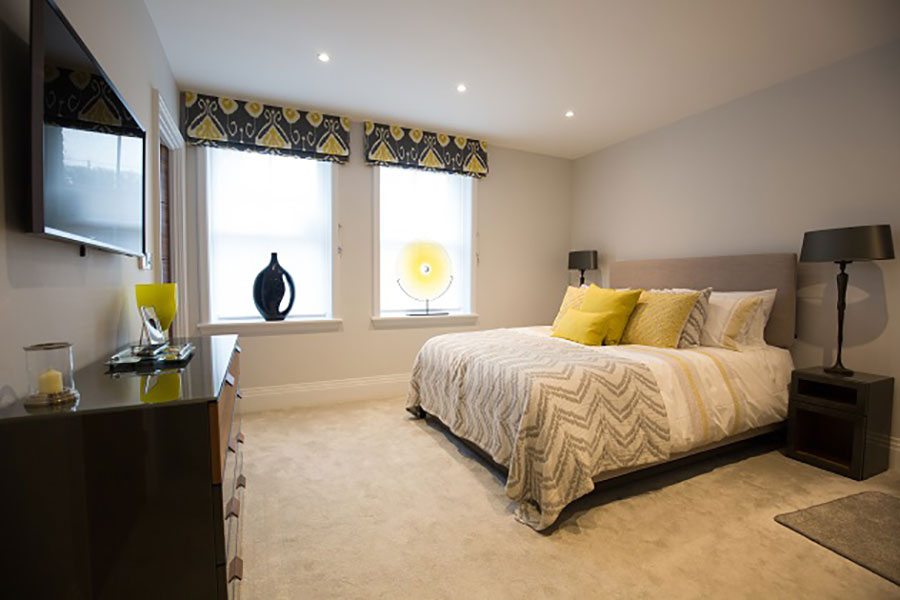
“Getting rid of clutter is a cathartic experience and you will fee marvellous afterwards,” says interior designer Beverley Barnett.
The four-pile approach to decluttering success
If you have trouble letting go, Andy advises organising unwanted items into four piles. Piles one and two are for functional items that you no longer need. “They’re wasted sitting in your property simply gathering dust,” he says. “Split them into the first two piles – either donate them to charity or sell them online or at a car boot sale.”
Next create a pile of items you may still get some mileage out of. “For instance, there could be a mirror or some art which doesn’t fit in with the design aesthetic of your bedroom, but could add an extra dimension to your living room or entrance hall,” Andy continues. “Redistribute these to other areas of your house where they may be useful.”
Finally, if an item isn’t of use to you or anyone else, don’t waste another moment thinking about it – get rid of it.
Even after a major purge, it’s easy to let clutter build up again – often in well-used areas. The key to keeping on top of it is to identify these spots and take small steps to keep them looking sharp before a viewing. Read on to find out likely clutter hotspots and how to make them ready for potential buyers.
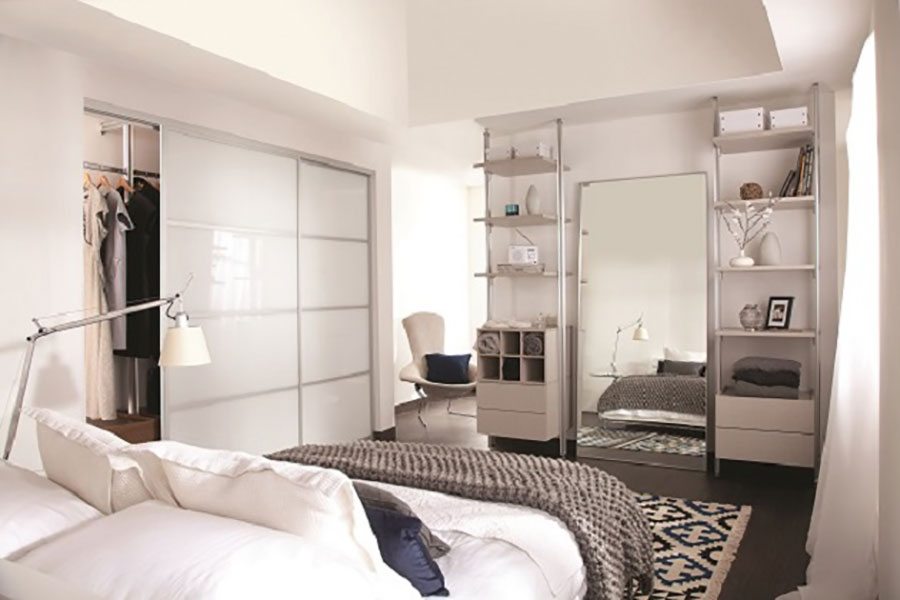
Spaceslide Premium Midi sliding doors in white, from £481.20 for design and manufacture.
Tackle your bedside table
“One of the most used and therefore most cluttered spaces in any bedroom is the bedside table – covered with a plethora of glasses, jewellery, skincare, books, mobile phones, lighting and often an unsightly knot of charging cables,” says Andy.
Old newspapers and magazines can go straight to the recycling bin. Return items that don’t belong on the bedside table to their rightful places and shelve any books you’ve read but want to keep. Unwanted books in good condition can go to a charity shop.
Remaining reading matter should be neatly stacked, making space for a reading lamp and perhaps a couple of decorative items such as a fragrance candles or picture frame.
Don’t forget that flowers bring a welcoming shot of colour and natural beauty to your nightstand. If you don’t have a vase to hand, old bottles, jars, tins and even teapots work just as well.#
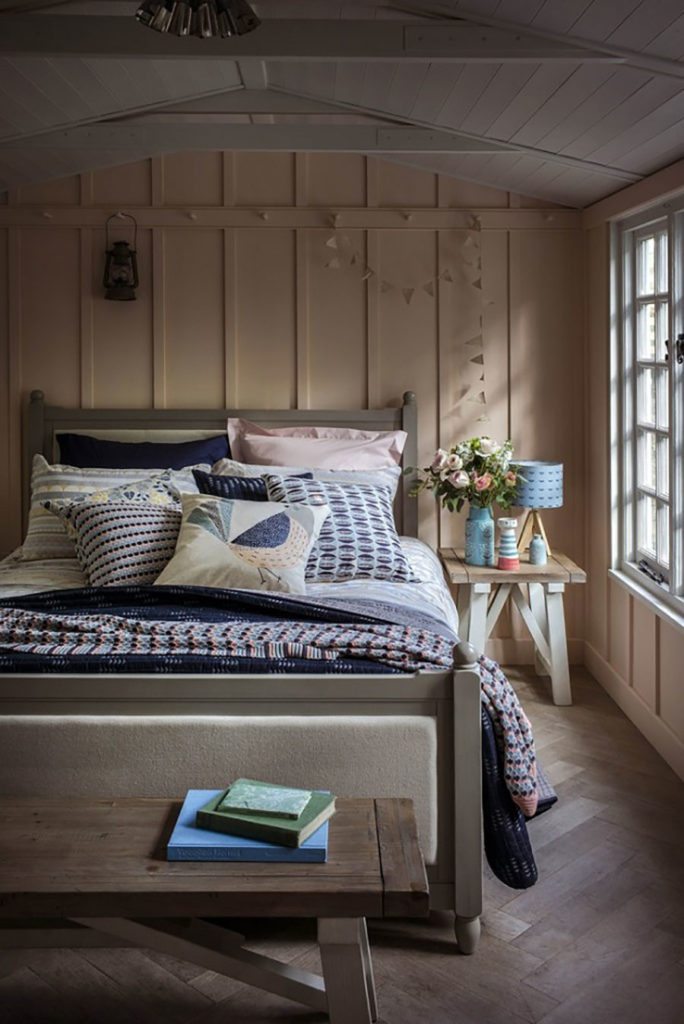
From the Dickens & Jones collection at House of Fraser comes the Axis lamp table £129, Penzance vase £18, Penzance print table lamp £60, Sailor vase £25 and Wild Mint diffuser £32.
Liberate chairs
“Many people have a chair in their bedroom that becomes a clutter hotspot,” says Beverley. “It’s so easy to put things on it, but this makes a room look untidy and unwelcoming.”
Hang up clothes before prospective buyers arrive and pep up an old or worn chair with a cushion or throw to add instant warmth to your scheme.
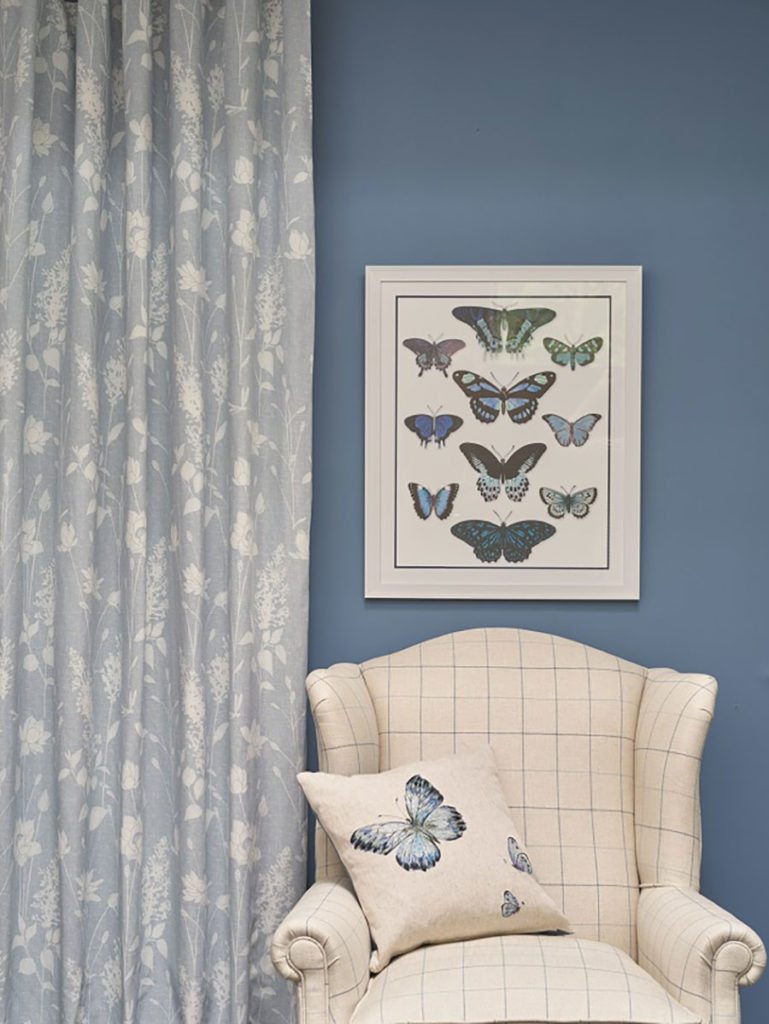
Adding dash of cool blue to this armchair is the Butterfly Beaded Seaspray cushion, £42 at Laura Ashley.
Store more under the bed
One of the most practical but least used spaces in the bedroom is under the bed. Buy cheap and cheerful boxes to store out-of-season clothing and blankets plus other seldom-used items. Vacuum storage bags are also a great idea: they reduce bulky clothes and duvets to a quarter of their size, giving you loads of extra space.
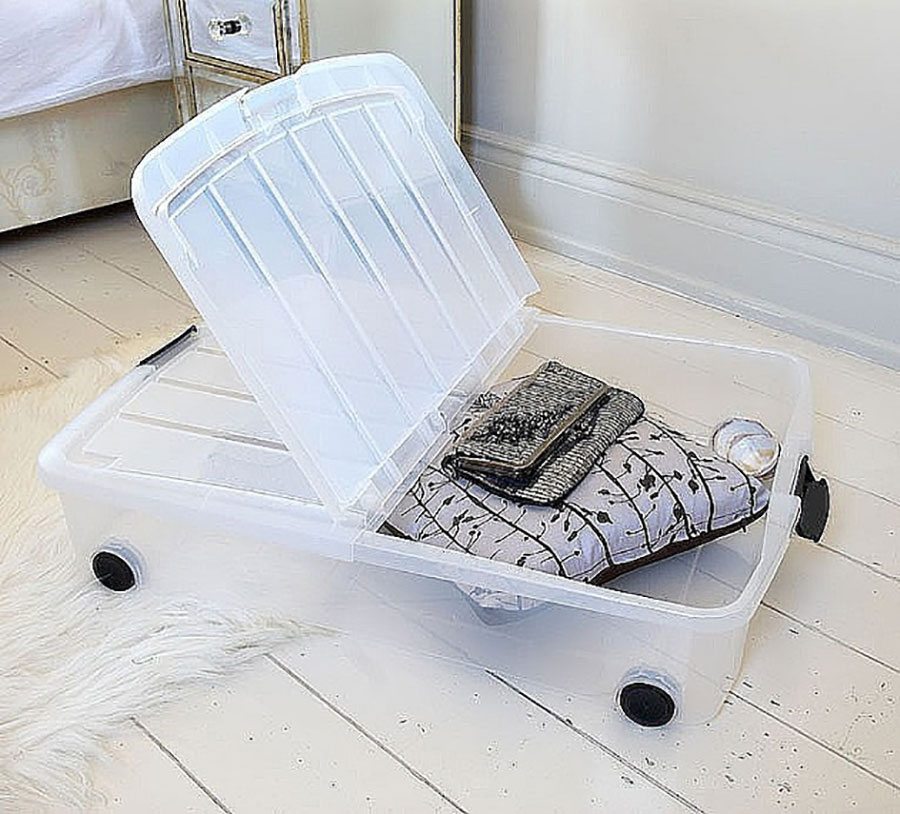
Priced £26.95 from The Holding Company, this spacious underbed box features a lid that folds up in the middle and wheels so you can roll in and out with ease.
Rework your wardrobe
Most bedroom cupboard spaces are poorly planned, so don’t be limited by the standard hanging bar and shelf. Save up to 10 per cent of hanging space with clever multi-hangers that can hold up to six shirts, and add a closet doubler (shown). This hangs from the garment rail and instantly creates 76cm of extra horizontal hanging space. You can also install affordable stackable shelves to make the most of redundant space in the base of the wardrobe.
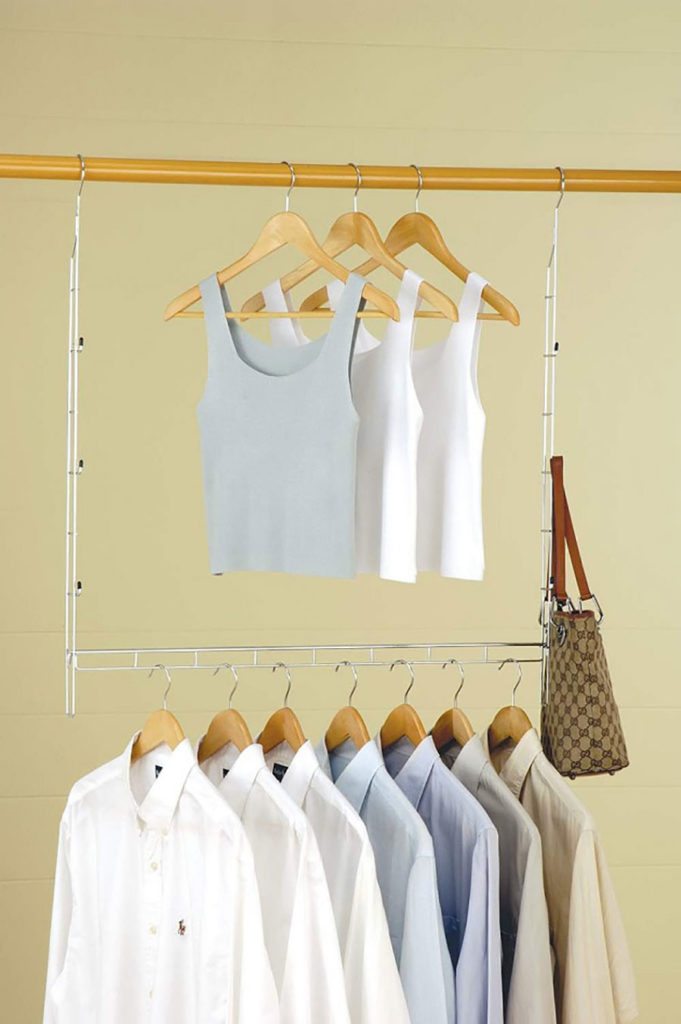
Maximise the storage capacity of your hanging rail with the closet doubler, £14.95 at The Holding Company. On each vertical are additional hooks for accessories and bags.
Clear your coffee table
It takes no time for stuff to pile up on a coffee table, making the living room another casualty of clutter. “You need to allow prospective buyers the chance to imagine what it would look like with their own personal style,” says Andy. Give them that chance by recycling magazines and newspapers, relocating items that belong elsewhere and stashing remotes in a basket or drawer. As a bonus, you’ll discover that it’s more relaxing to sit down and enjoy a cup of tea without having to clear a space first.
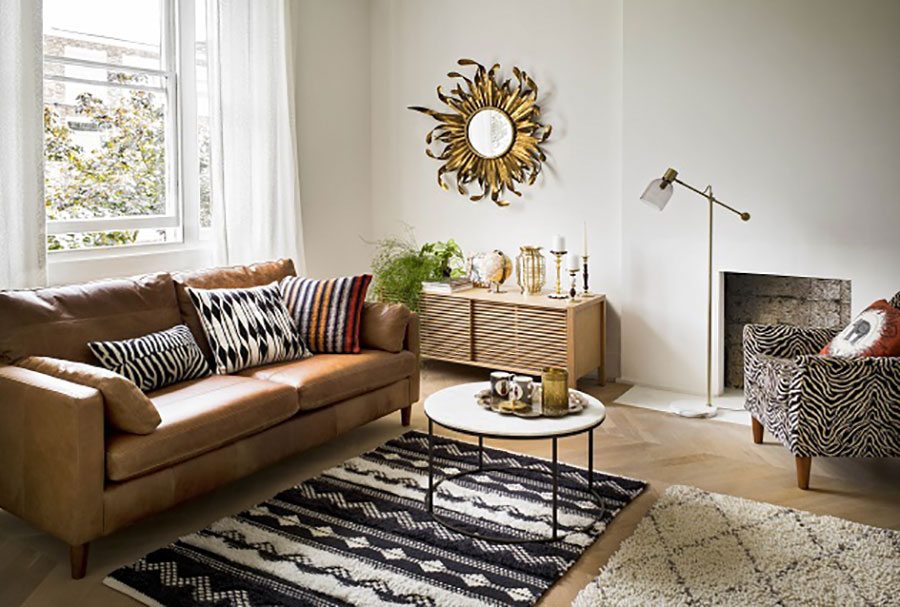
This Conran Farley coffee table £299, Safari Pineapple mug £6, biscuit tin £9.50 and scallop metal tray £35 are all available at M&S.
Live with less
You can make living spaces feel clutter-free by reorganising shelves and display cabinets. “Reserve lower levels for bulkier items and keep shelves in the line of sight for decorative objects and ornaments,” advises Claire Hornby, creative stylist at Barker & Stonehouse. Box up good-quality unwanted books and trinkets and donate them to charity; after all, one man’s rubbish is another man’s gold.
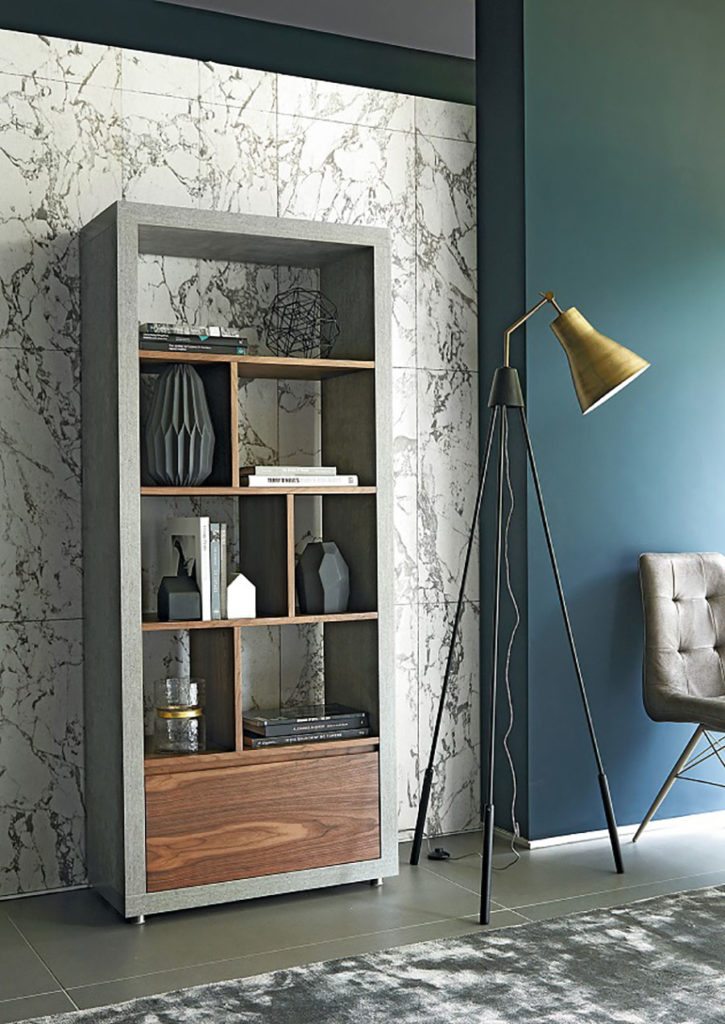
The Halmstad bookcase £695, and the Corby floor lamp £229, both available at Barker & Stonehouse.
Boost your bathroom
Prospective buyers place a premium on bathroom space, so create that by clearing out drawers and cupboards. Get rid of medicines past their expiration date and half-used products that you’ll never finish. And while it’s fine to bulk-buy, you don’t have to store duplicates in the bathroom cupboard. Box them up and stash them elsewhere.
Once you’ve cleared cupboard space, remove lotions and potions from countertops so that only the most beautifully packaged products are on display. Place toilet rolls in a basket or stack them neatly on a toilet roll holder, and think about investing in affordable shelving to store clean towels. If your bathroom accessories are looking a little tatty, look for affordable options on the high street to smarten up your space instantly.
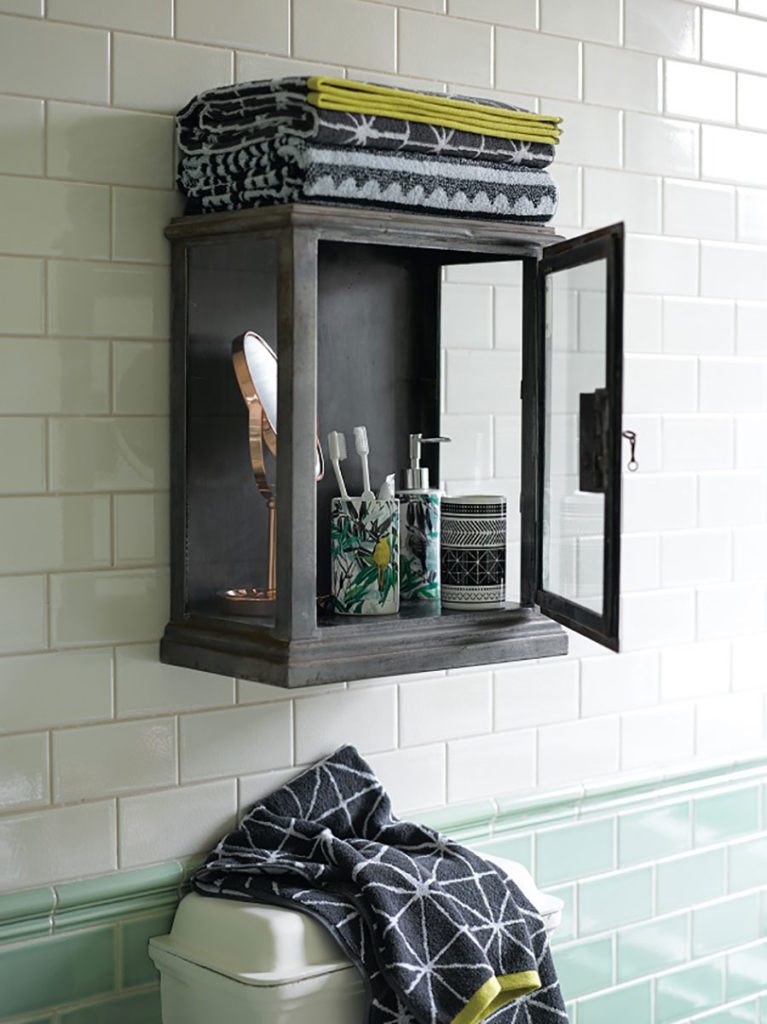
The Bird & Leaf dispenser £5, Bird & Leaf Tumbler £3, copper metal mirror £8, Geo print tumbler £3 and Botanical towels from £4 are all from George Home at Asda.
Deal with kitchen chaos
The importance of the kitchen in securing the sale of your home cannot be underestimated, so make sure yours is looking its very best with these steps.
Step one. Throw out anything whose presence can’t be justified. This includes gadgets you don’t use, chipped tableware, plastic boxes without lids – you get the picture.
Step two. Assign a home to every item: designate drawers for flatware and specific cupboards for tableware and cookware. Then clear all clutter off countertops and into its assigned place. It may seem convenient to keep items on the counter but they often look messy, take up valuable prep space and become a nuisance when you’re cleaning. Make more of your kitchen drawers by storing stuff you use less regularly at the back of cupboards and placing everyday items within easy reach.
If you don’t have enough storage space, invest in a couple of cheap open shelves: they’re very on-trend right now. Reserve your most attractive kitchenware for the shelves and hide plainer items out of sight.
Need essentials in easy reach? Hooks and holders are a handy solution to keep clutter off the countertop. Try the Rimforsa series at Ikea, which starts from just £6 for the rail and can be tailored to your storage needs.
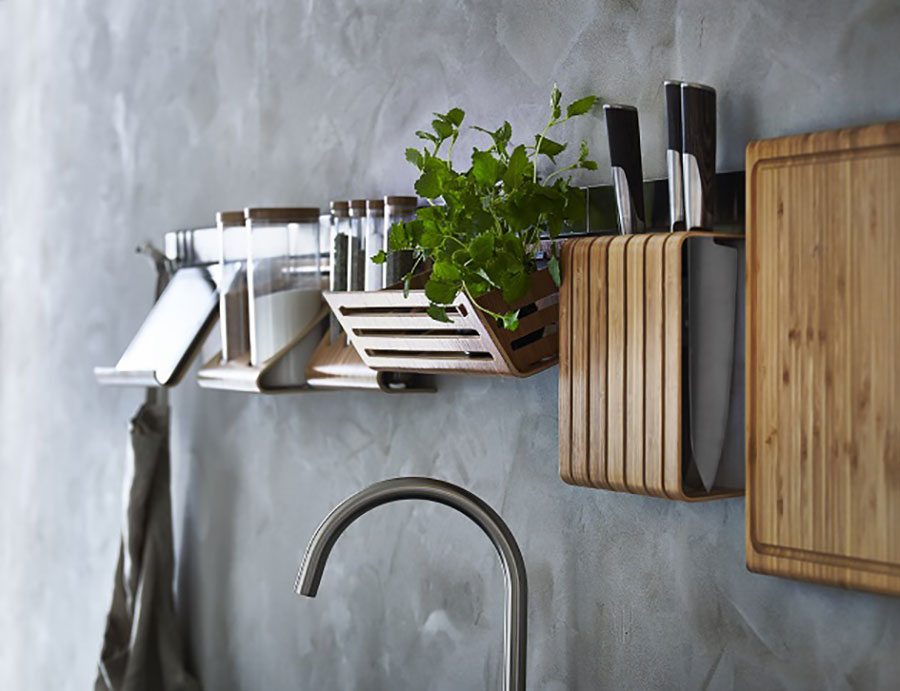
Pictured are items from the Rimforsa series at Ikea: (left to right) tablet stand £10, holder with containers £17, holder for containers £8, basket £13, knife holder £15 and chopping board £12.
Restore order to your hallway
Your hall is likely to be the first part of your home that viewers see, so make it welcoming and clutter free. Store keys in a bowl and mail in a basket – just don’t forget to check it regularly. You can also install hooks for coats and scarves, and find a stylish storage basket for hats and gloves. School bags can be hung up, but if they’re too full, encourage their owners to get into the habit of storing them in their bedrooms.
Shoes are a trip hazard in the hallway and need storing properly. Racks and shoe cubbies work well, or if you don’t want shoes on display, invest in a reasonably priced shoe cabinet. Then aim to keep everyday shoes in the hallway and less well-used ones in bedrooms.
And finally, a mirror is great for a last-minute check before dashing out of the house, and also opens up a narrow space . Relocate a mirror from elsewhere in your home or pick up a cheap one to make the most of light in your hall.
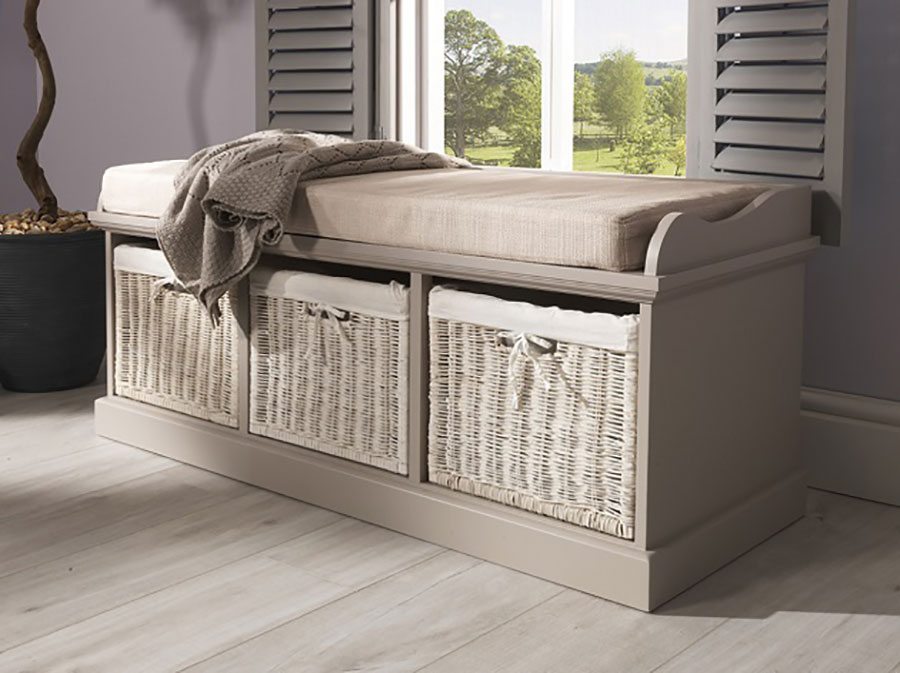
Stylish and practical, this Tetbury bench seat in Truffle with colour co-ordinated cushion cover is priced £189.98 from Bedroom Furniture Direct. The generously sized white baskets are perfect for shoes, books and scarves.
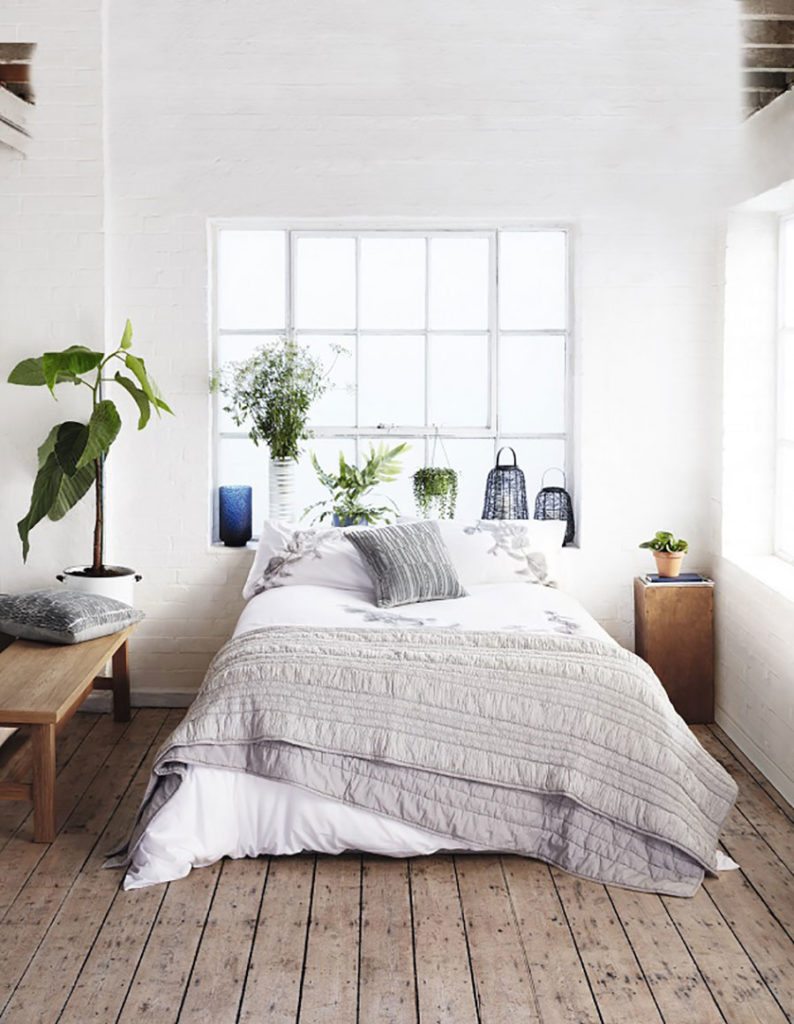
Pictured on the window sill are a Blue cut-glass Hurricane lamp £40, white strip glass vase £38, medium black wire lantern £35, small black wore lantern £25, all from the John Rocha collection at Debenhams.
Keep sills clear
Window sills are yet another potential clutter zone. Beverley advises removing all items, dusting the sill and putting just one or two items, such as a favourite photo and a candle, back.